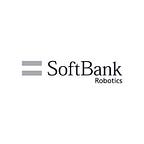Telling Your Brand’s Return-to-Work Story to Connect with Customers
Sassy tweets from popular fast food joints. Employee profiles and human interest stories on corporate B2B blogs. Brands championing the causes their people and customers care about most. Connecting with customers through stories and the human touch have become table stakes in marketing across all industries over the last several years. Fueled by the rise of social media influencers that seamlessly connect lifestyle to product, the modern consumer craves a more authentic, human connection with the brands they frequent.
Amid a global pandemic, connecting with customers on a human level has become more challenging — and more critical — than ever before. Industries like retail and hospitality that depend on in-person interactions to reinforce their brand have found those experiences drastically changed. At the same time, prolonged social isolation has only heightened customers’ inherent need for human engagement and empathy. All brands, no matter the industry, have had to weigh the balance between promotional messaging and compassionate, human-oriented messaging.
Marketing during a pandemic is new territory for all of us. And now, a new challenge is rising: your organization’s return-to-work plans. How you tell that story matters — for your employees, for your customers, and for your brand.
Telling Your Brand’s Return-to-Work Story
Return-to-work doesn’t just affect your employees. It also affects your brand’s reputation and customer perception of your organization. Customers support companies whose values align with their own; they support companies they trust. As we try to return to a new normal, customers want to know how your organization is treating its employees and bringing them back to work safely. Leverage your communication channels to tell your brand’s return-to-work story, and encourage employees to share their stories on social media as well.
However, in order to tell a return-to-work story that connects and builds trust with customers, your organization has to have a strong return-to-work strategy. For this reason, marketing and PR leaders need to advocate with the broader leadership team to ensure that your organization’s return-to-work strategy presents the organization in a positive light — both internally and externally.
Championing a Cleaner, Safer, and More Innovative Workplace
As a marketing leader, you can be a powerful champion for a safer, cleaner work environment and human-focused policies. A key area of focus is heightened cleanliness, which has been made easier and more cost-effective by recent advancements in automated cleaning technologies.
On that note, remember that customers also like to see companies leveraging innovation, so your organization’s use of technology during the return-to-work phase can be a valuable story to tell.
For example, leveraging cleaning robots like Whiz, the autonomous vacuum sweeper from SoftBank Robotics, developed and distributed in partnership with Brain OS and ICE Robotics, in your workplace can not only demonstrate your company’s commitment to innovation, but also help employees and customers visualize the increased cleanliness. You may not be able to see cleaner air due to more frequent and thorough vacuuming, but you can see a vacuum cleaning robot making the rounds throughout the day!
Contact SoftBank Robotics to learn more about how automated cleaning tech can help your organization create a return-to-work story worth telling.
Written By: SoftBank Robotics Team
